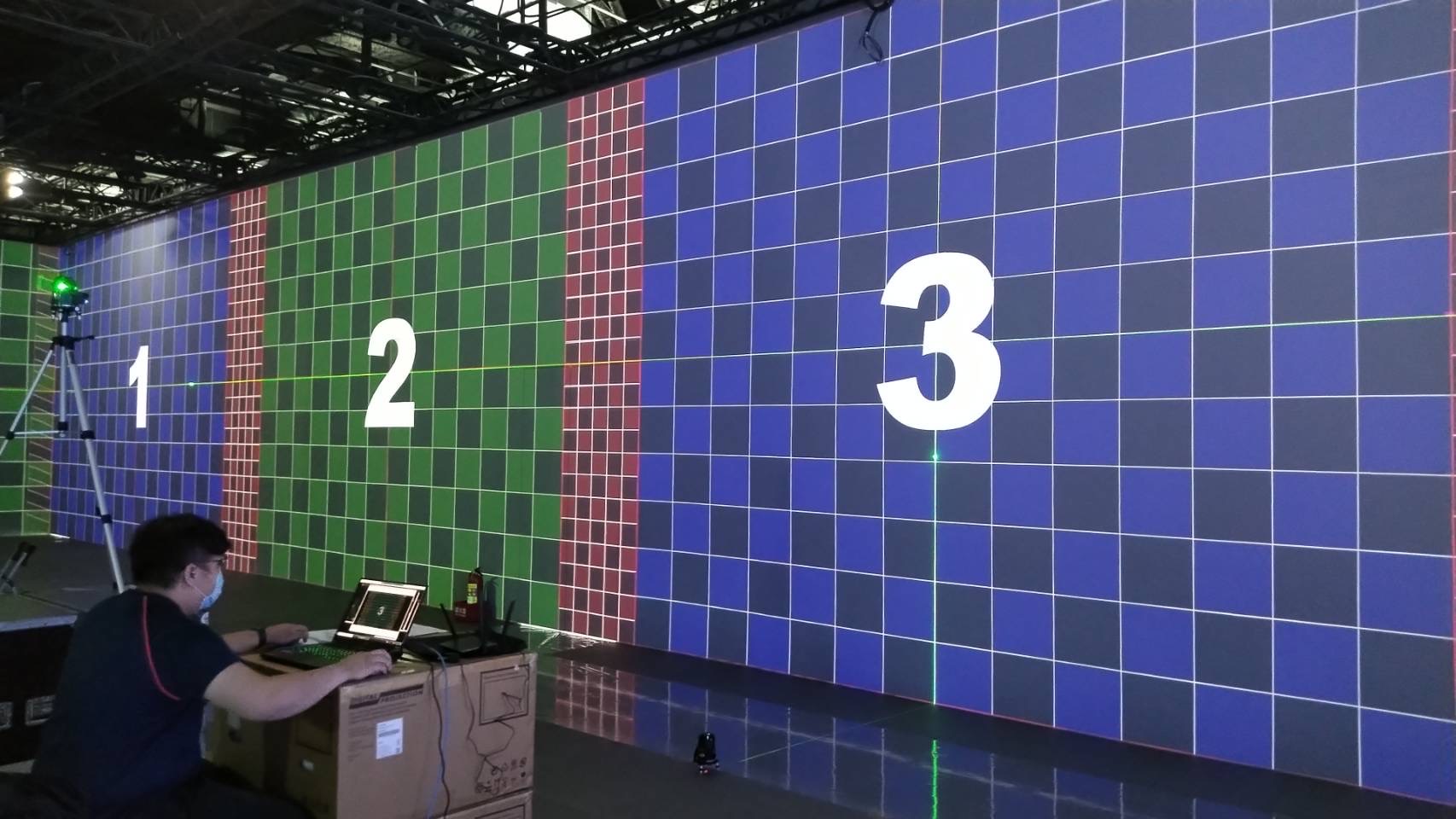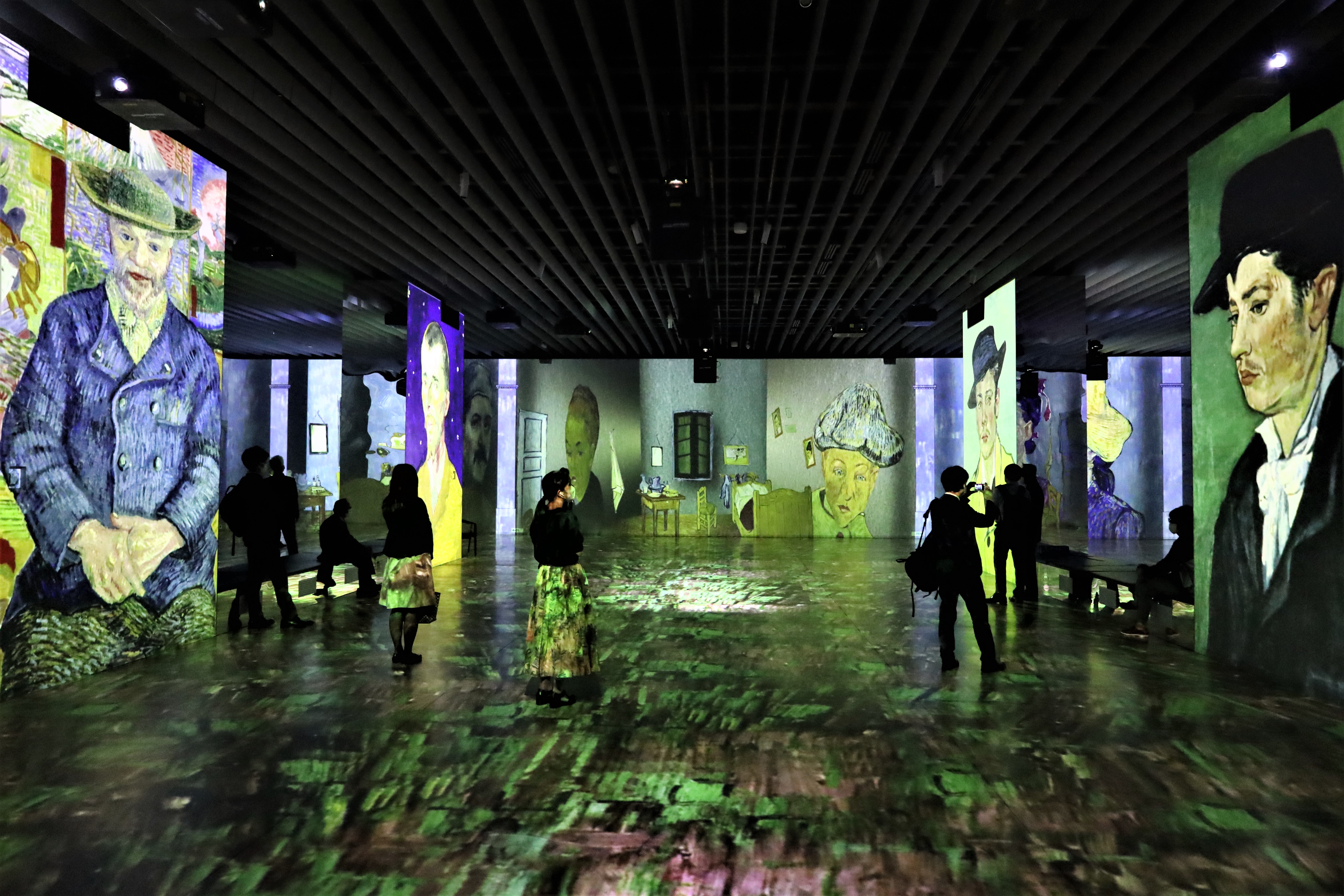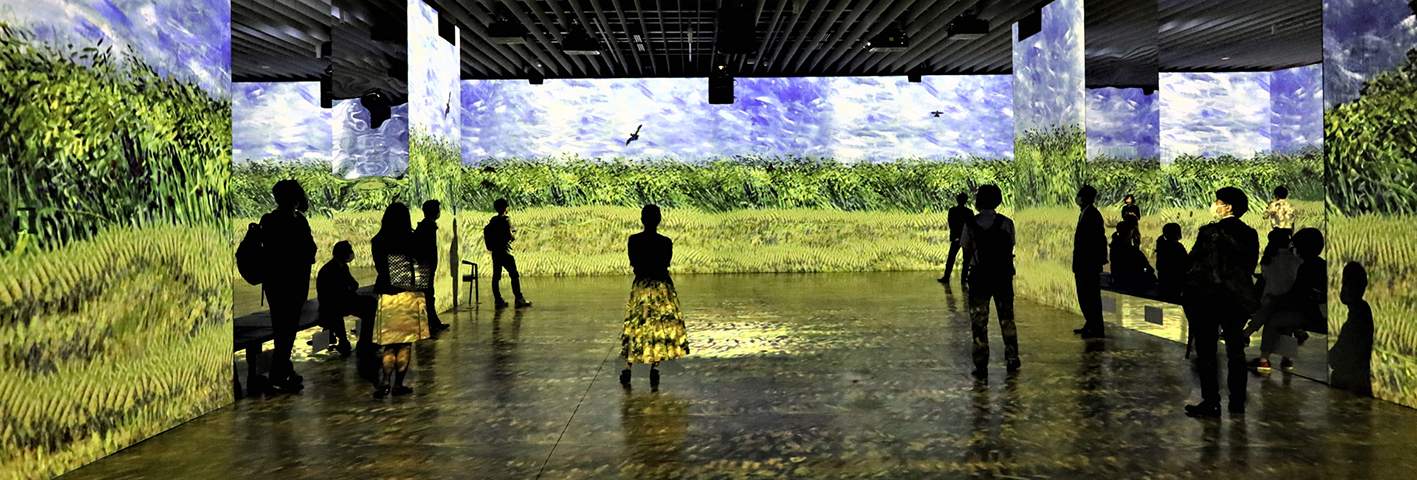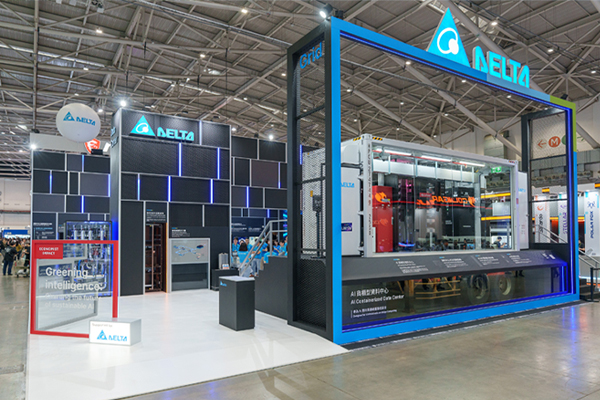Delta’s projection technology bridges the space between the real and the virtual Compared to how most spaces in Taiwan are transformed into immersive spaces only during an exhibition period, the AMBI SPACE ONE, located on the 5th floor of the Taipei 101 building, was created as a permanent immersive smart space. Through diverse creative works, the audience can enjoy a new experience with every visit. AMBI SPACE ONE uses 40 high-end laser projectors produced by Delta’s associate company Digital Projection. The projectors are used to create the first five-sided, fully-immersive projection space in Taiwan, with 64K projection on the walls and 24K on the floor.
The recently launched “Illusions x Realms - The Key to Parallel Universes” fully immersive exhibition guides the audience on a journey through parallel time and space between the real and the virtual. From middle-earth where magic exists to the pink dreamscape of teenage girls and the space between the stars and moon, the exhibition provides unknown adventures beyond the imagination through eight different magical settings. AMBI SPACE ONE uses 40 high-end laser projectors produced by Digital Projection to create the five-sided, fully-immersive projection space. (Source: AMBI SPACE ONE)
AMBI SPACE ONE uses 40 high-end laser projectors produced by Digital Projection to create the five-sided, fully-immersive projection space. (Source: AMBI SPACE ONE)
The interaction between art and technology creates ever-changing video experiences The requirements proposed by AMBI SPACE ONE for providing the best visual effects include using the height of the wall to obtain the maximum projection area, which allows the audience to travel through time and space via the exhibition. The 40 projectors have been integrated into a rectangular and limited space. Avoiding interference between the lights and ensuring heat dissipation have been major challenges in the dense installation space. “The projection path of each projector may contain one or more projectors. This may not be a problem when the space is high enough, but the installation height of projectors in AMBI SPACE ONE is lower than the projection screen, making it relatively difficult to avoid interference among the projectors,” said senior engineer Mr. Evan Tseng of the Display Solutions Business Unit, sharing the biggest challenges during the project. “At the time, we proposed over 10 different design schematics. When we did the actual measurements, we found that the space was smaller than the blueprints. We had to use a 3D simulation to determine the position of each projector.”
Besides providing immersion to the audience, the permanent immersive space should also consider the configuration of the projectors, so that the creativity of different teams can work perfectly with the projectors. “If we are only trying to fill the walls, some projectors will be closer, some will be further, and the images would vary in size. This could create problems during the content production stage as image quality would be uneven. So, we had to consider the consistency of installation intervals when planning the installation locations,” remarked chief engineer of mechanism design Mr. Jason Huang of the Display Solutions Business Unit, providing further explanation.
Since the launch of AMBI SPACE ONE in 2021, the Delta team has conducted onsite calibrations every month to ensure the quality and precision of the projected images, which allow audience members to immerse themselves in ever-changing video experiences through the awe-inspiring projections. Conducting onsite adjustments to the projections in AMBI SPACE ONE to ensure the accuracy of the projected images
Conducting onsite adjustments to the projections in AMBI SPACE ONE to ensure the accuracy of the projected images
The Kadokawa Culture Museum in Japan presents an immersive world through the eyes of Van Gogh After the well-received “Ukiyo-e Theater from Paris” exhibition, Delta partnered with the Kadokawa Culture Museum again to introduce the “Van Gogh - How I See the World” 360-degree digital art experience. The Van Gogh exhibition consisted of eight screens and leads the audience through Van Gogh’s works from different periods through the moving images and music.
The 1,100 square meter Grand Gallery space on the first floor of the art museum was transformed into a 360-degree immersive space through Delta’s 34 Digital Projection E-vision 10000 series high-end laser projectors. The audience could immerse themselves in the world of Van Gogh and admire his famous works, including “Sunflowers”, “Starry Night”, and “Bedroom in Arles”. The expression of true colors and clarity of vibrant images fully present the master strokes of Van Gogh’s paintings and his bold use of colors.
From the “Ukiyo-e Theater from Paris” to the Van Gogh exhibition, the 360-degree immersive experience was created through collaboration between art and Delta’s technical team. Mr. Aaron Hsu, sales associate manager of Delta Electronics (Japan), still clearly remembers the installation process when talking about the collaboration with the Kadokawa Culture Museum. “The two weeks of installation and adjustments were the hardest. Sometimes the designs of the art team would not fit the actual space. We had to accommodate the works to adjust the projection angles and screen sizes. When the projection screens had to be up to 200 or 300 inches, the resolution of the screen furthest from the projector would decrease. The image would become more pixelated and we would have to immediately adjust the projectors to improve the resolution problems. Many adjustments were required and we had to spend a lot of time adjusting the projectors one by one, in order to provide the perfect immersive experience for the audience through the 34 projectors.” The 34 projectors installed in the Grand Gallery were adjusted one by one by Delta's team during the installation period, to ensure the perfect 360-degree immersive quality.
The 34 projectors installed in the Grand Gallery were adjusted one by one by Delta's team during the installation period, to ensure the perfect 360-degree immersive quality.
Continuing to explore more possibilities for high-end projection technologies and innovative art Apart from creating an immersive space for the Kadokawa Culture Museum, recent success stories of Delta Electronics (Japan) also include the application of 8K projection technologies in the Mori Museum in Tokyo to display AI-based visual art. The company has subsequently worked with several well-known art museums, such as the 21st Century Museum of Contemporary Art, Kanazawa, and the Museum of Contemporary Art Tokyo. The display solutions have been applied to various art forms and exhibitions of a certain scale.
Delta’s video solutions have undoubtedly helped various arts and culture settings, and created the best stage for immersive exhibitions. The solutions have provided visual feasts to fully immerse audiences. In the future, Delta will continue to work with various arts and culture spaces to explore ways to combine high-end projection technologies and artistic applications and innovations. Delta is encouraging new forms of artistic creation and aims to provide ultra-high definition and diverse exhibitions for audiences.
 Delta’s high-end laser projectors fully present the master strokes of Van Gogh’s paintings and his bold use of colors.
Delta’s high-end laser projectors fully present the master strokes of Van Gogh’s paintings and his bold use of colors.



















